#Commodore Plus4
Explore tagged Tumblr posts
Text

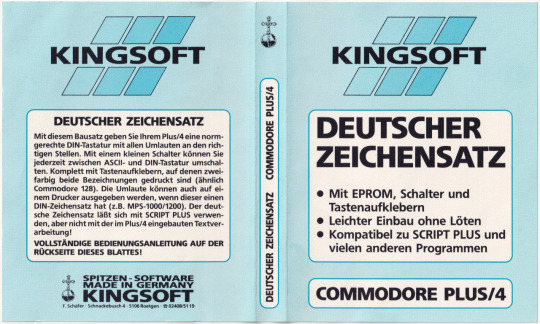


German Character Set for Commodore Plus/4
This is a switchable kernel for the Commodore Plus/4, which includes the original kernel and a kernel with a German character set. The EPROM must be installed in the computer, and the kernels can be switched using a toggle switch. It is a 32KB EPROM 27256, with the patched kernel located in the first 16KB. The image can also be tested in the VICE emulator.
Along with the EPROM, keyboard stickers were provided to be applied to the Plus/4 keyboard. The character set does not work with the Plus/4's 3+1 software package, but it is functional in BASIC and also in Script Plus.
I have uploaded the EPROM image to Archive.org
42 notes
·
View notes
Text



FujiNet: The First Five Years – Jeff Piepmeier
Five Years of FujiNet! This is the year of new “bring-ups,” exciting advances, and more features for FujiNet, the multi-peripheral network device for vintage computer enthusiasts. FujiNet made its way onto two new platforms and will be demonstrating the compact Macintosh (68k) and the TRS-80 Color Computer prototypes. The team made firmware and hardware advances for the Apple II+/e/c/gs and Commodore VIC-20/64/16/Plus4 and will be showing the Apple II production FujiNet device. Atari 400/800/XL/XE remains a perennial favorite seeing the development of aNode Desktop and moar High Score Enabled games – you can compete with your friends and other Atari gamers! The game lobby and original multiplayer games emerged onto the scene leveraging the distinctive network device and protocol adaptors. More vendors are producing devices enabled by FujiNet’s open source licenses making FujiNet more widely available. The team is more active than ever and looking forward to reaching all vintage platforms.
VCF East XIX
16 notes
·
View notes
Text
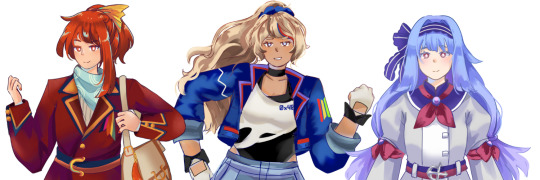
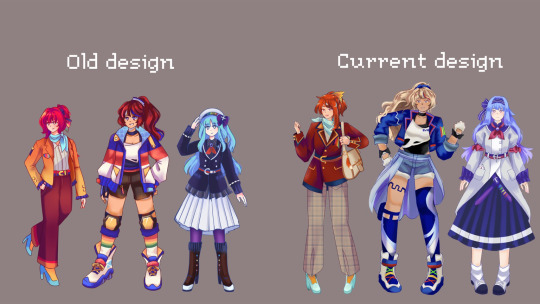



Redesigns of my computer gijinka characters!
L to R: Vicky (Commodore VIC-20), Kairi (Commodore 64), Justine (Commodore 16/Plus4)
They look taller in their current forms haha
#illustration#original character#ocs#gijinka#gijinkas#personification#character design#commodore vic 20#commodore 64#c64#commodore 16
5 notes
·
View notes
Text
RetroGaming Shorts Part 101 - Lunar Landing
Lunar Landing 1985 (Commodore 16/Plus4)
This hybrid of Frogger and Lunar Rescue is interesting to me because the obstacles move in orbital arcs rather than straight left-right. The arcs are jerky due to being restricted to 8x8 char tile movements, but the overall result is smooth enough.
youtube
1 note
·
View note
Video
youtube
kkomputer 🕹 Tech Aesthetiks
#Commodore#Retro Computing#Retro#Retro Computer#Commodore Plus4#Commodore Plus/4#Plus/4#Mercenary#Commodore 364#Commodore 116#Commodore 16#C16#C116#C64#C128#vintage computer#computer love#8bit
1 note
·
View note
Text

Commodore Plus/4
124 notes
·
View notes
Text
Amiga Forever and C64 Forever 9 Released
Amiga Forever and C64 Forever 9 Released #commodore #c64 #amiga #pet #plus4 #emulation #emulator #amigaforever #c64forever #cloanto
The best Commodore 8- and 16/32-bit software emulation packages are back, this time with Amiga Forever and C64 Forever 9. There are new Arcade Tile modes via the View menu, Light vs. Dark modes, Virtual Keyboard, Virtual Mouse, Fullscreen Controls, and many more new features in this latest release. Raid on Bungeling Bay, one of my all-time favorites, and one of the countless great games you can…

View On WordPress
0 notes
Text
Game Review : Beach Head
US Gold/Access / 1985 / Originally £5.95 / Commodore 16 & Plus/4
Access were in at the start of the home computing revolution. They’re one of those companies that you probably know the games better than the company that made them; Raid over Moscow was one of theirs, as well as Leaderboard and later, Links. Before any of those arrived though, there was Beach Head.
The game was based on some classic World War II style Pacific Ocean theatre action. Everything about the game suggested it; the cover art bathed in the imagery with it’s fighter planes strafing the beach as the landing craft deposited their human cargo ready for the onslaught. The map that greets you at the start of your campaign could be of any Pacific atoll. You can almost hear Douglas MacArthur shouting “I shall return”.
youtube
General Douglas MacArthur, yesterday.
The game was a hit, and was picked up for distribution in Europe by US Gold, conquering this side of the Atlantic. Players who didn’t have a Commodore 64 or Atari home computer soon wanted in on it so US Gold commissioned conversions from other developers, with Ocean notably handling the well received Spectrum version. That sold well too.
So when the Commodore 16 and Plus/4 came along in 1984, US Gold decided to treat owners of those systems to their own version of the game. Beach Head was given to Anirog to convert, who were gaining a bit of a reputation as platform specialists. The game arrived in 1985, two years after Access had released the original.
Firstly, the developers had their work cut out. Anirog had to contend with a target machine with far less resource than the other systems Beach Head had been converted to. Compromise was inevitable.

Just missed ‘im. This happens a lot.
On other systems, Beach Head is made of four stages - you start with a fleet of eight ships and from a map screen you can choose to take them through an underground cavern, threading your boats between mines and torpedoes to make the later levels easier to complete.
This is then followed by the first shooting gallery section; your fleet has been intercepted by enemy ships and you must launch a defence against incoming bombers who will eventually sink your ships if you don’t shoot them down first. Once the enemy is out of fighters (or just bored, it’s never clear which) this then turns into a second shooting gallery round where your attention passes to trying to sink the enemy’s fleet of shops.
Do that and it’s back to the map screen and charging your ships towards the beach and unleashing your tanks over an obstacle course so they get a chance at the fifth level - destroying the big gun at Kuhn Lin in another shooting gallery level. Inexplicably on this level, the enemy gun takes a long time to aim at you and bizarrely, you have to shoot targets at the base of the weapon. This is what causes the gun to blow up - maybe this is what happens when “we’re tired of experts” extends into the military.
Anyway, can you start to see where this is going?
On the Commodore 16, Gone is the map screen and the underground cavern where you thread your way through mines and dodge torpedoes to bring your boats through. Most significantly, the final level is truncated, removing the tank advance, which was a favourite for many players. Anirog focussed on the three which shared the most in common. What remains is still the core of the game however - protect your fleet first from incoming planes, sink the enemy fleet before they sink you, take on the big gun.
Being so significantly cut down was of course necessary for the small memory of the Commodore 16. It could have been done as a multi-load, but then the flow of the game would have been compromised. Plus/4 users, with their 64k of memory get the same thin gruel as everyone else, the size of that market unable to support two separate versions. It could barely support one, but that is for another time.
With the reduced footprint, it is still not enough.The graphics measure up to the C64 original, the sound is serviceable, but there has been a significant compromise in terms of playability.
Your gun turret - your main interface with the game is incredibly difficult to control. You can aim it just fine, adjust the height just fine and a fire just fine. But not all at the same time.
On other versions, combining actions was taken for granted. Sink a ship in the sea-battle level and you’re already moving across the screen changing your weapon’s angle as you go. It’s part of the game. Every fraction of a second counts. However here, try combining things and the turret just stops. Then there is the disappearing turret; when this happens, you really don’t have much idea of what is going on. It’s like conducting a war via seance. Except you’ve not got the plant in the room banging the table leg with their foot when the fake medium wails “is there anybody there”.
This bizarre situation just about works with static targets once you get used to it, but when defending the fleet from incoming fighters and taking on the big gun? It just doesn’t work. You end up just resigning yourself to keeping the gun in one position and elevation and keep firing, hoping that the planes fly into your shots like a blundering toddler into a set of closed patio doors. The element of skill is removed from the game completely and it becomes a weary battle of attrition with you hoping that you don’t lose too many ships to make it to the later levels.
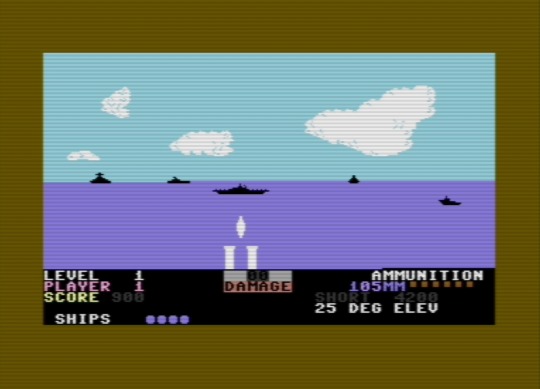
The fighters gone, a ship starts shelling me. God knows what is going on. Press fire and hope for the best.
Why there is a such a glaring hole in the game is inexcusable and smacks of the kind of half-arsed platform exploitation that US Gold were infamous for. Compare this to literally any other game on the Commodore 16 and it really feels like an unfinished budget title rather than something crafted and worthy of your £5.95.
But! Bill Herd who designed the Commodore 16 and Plus/4 said they were never intended to be games machines. They were meant to be more basic machines that extended at the top end into the business market. They were meant for text editing. Give Anirog a break! Oh yeah? Played Trailblazer?
Buying it today
From what we can make out, it does not seem to appear that often so does have a certain uniqueness to it. The C64, Atari and Spectrum copies are ubiquitous but other platforms a lot less so. It was re-released on the Americana label, though this seems to be rarer than the full-price version. Expect to pay anything up to £10.
Commentariat
Tim : Sad to say, but Beach Head has not aged well. While not a bad game, it is very much of its time regardless of the system you play it on. The game is a nice walk down nostalgia lane and in some ways is one game you yearn to return to, but when you do it’s not as good as you remember. This stands in stark contrast to Raid over Moscow...
Liking this version is doubly hard. The cut-down nature of the game I can understand, being fundamentally unable to play I can’t. Don’t waste your time or money unless you are a completist or masochist or both.
Score Lord : How did you get my number? Don’t call again.
Meat : Back during Christmas 1983, my next-door neighbour’s big present was a Commodore 64. He and his brother were given the machine and also had two games, Gorf which came on cartridge and was great for a quick blast and Beach Head which came on cassette which to begin with, they couldn’t play. Their Dad having only seen a Spectrum and thought he’d save a few quid using by a household tape recorder instead of the necessary Datasette. The idiot.
When we finally got to play it, we loved it. So much so that the following Christmas I got the Spectrum version for my poverty-spec gaming experience. Imagine my surprise when I found out a version of Beach Head existed on the equally poverty-spec Commodore 16.
After eagerly loading it, I was hoping for a smart conversion that played to the strengths of the machine. The reality could not have been further from the truth. Disappointed was not the word. Just for comparison I checked out the Spectrum version again and yeah, the problem wasn’t rose-tinted glasses.
Between them, Anirog and US Gold had managed to take a decent game and make it both uncontrollable and dull. Send for the Inspector, a crime has been committed.
Score card
Presentation 5/10
You get the full-price experience for the time, which is quite nice. At least this is an area where they could be arsed.
Originality 2/10
Coming in 1985, the novelty factor of the original was two years passed. With the compression of the game, it’s lost even more in these stakes. It’s now basically just a shooting gallery game, with the fun sucked out of it.
Graphics 4/10
Not going to win any awards, but tidy enough. Hold on, are those blobs supposed to be ships?
Hookability 1/10
You can’t really play it effectively.
Sound 3/10
There isn’t much, but what there is has been done satisfactorily.
Lastability 1/10
No hook into the game, no point in playing.
Value for Money 1/10
Not worth £5.95 of anyone’s cash in 1985 and certainly not worth that today.
Overall 2/10
A conversion so wretched that at the time you’d have been better off putting the money towards a second-hand C64 and picking the title up on budget. Today, it’s for the collector only.
#Commodore 16#C16#Plus4#Commodore#beach head#afg#antiquesforgeeks#retrogaming#retrocomputing#retro review
0 notes
Photo

New high score on Proof Of Destruction [P.O.D.] (Commodore 16/Plus4) by plus4punk 280,330 https://ift.tt/365qUyd
8 notes
·
View notes
Photo



(via Gunfright Ultimate Edition - Ultimate Play the Game classic is ported to the C64, C128 and Plus4! )
#retrogaming#retro gaming#c64#Gunfright#Ultimate Play the Game#C128#Plus4#Commodore 64#Commodore 128#Port#Conversion#gaming#games
5 notes
·
View notes
Text
Joe Blade v2023.01.25 (Nintendo Game Boy) (Game)
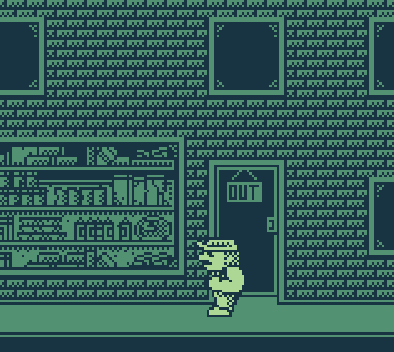
Joe Blade v2023.01.25 (Nintendo Game Boy) (Game) Joe Blade by Rajcsányi László is an action game made with GB Studio. Original version: Kevin Parker & Colin Swinbourne - Players. Commodore 16/Plus4, 1988. In this game you play as Joe Blade.... Read the full article
0 notes
Text

Clock Signal 2025-02-26 - A latency-hating emulator of: the Acorn Electron and Archimedes, Amstrad CPC, Apple II/II+/IIe and early Macintosh, Atari 2600 and ST, ColecoVision, Enterprise 64/128, Commodore Vic-20 and Amiga, MSX 1/2, Oric 1/Atmos, early PC compatibles, Sega Master System, Sinclair ZX80/81 and ZX Spectrum.
#commodore#retro#amiga#vintage#classic#retrogaming#videogames#cbm#8bit#vic-20#plus4#emulation#macos#apple
8 notes
·
View notes
Text
Trials & I Visiting Simulator (1983, Commodore) (C16/Plus4)
0 notes
Text
New Post has been published on Books What
New Post has been published on http://bookswhat.com/archives/44707
C64 Hardware A Compendium
C64 A Compendium, 1st Version with the Years 2009 to 2016Over 450 Introductions, some with intensive explanations, a lot photos, a whole lot of hyperlinks – with QR-Codes for printouts, circuit- & boardlayouts with technical explanations and simply...
0 notes
Link
0 notes
Photo

cOMmoDOrE pLus/4 mit daTASETtE
75 notes
·
View notes